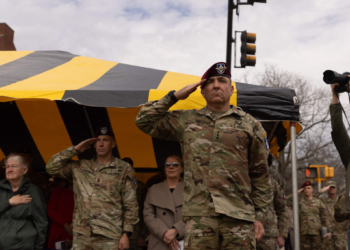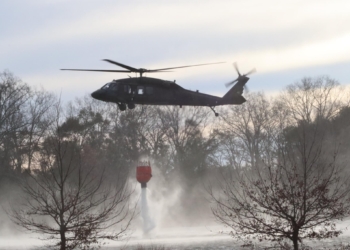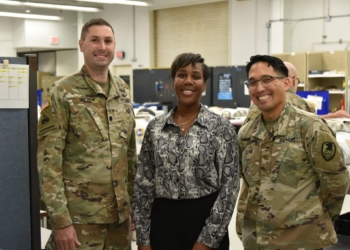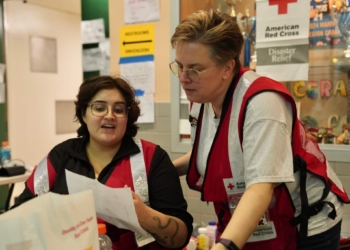The very first time the Army and Navy football teams met on the field, more than 270 Corps of Cadets members gave 52 cents each to pay half of Navy’s traveling costs.
It’s safe to say that the annual Army-Navy football game has gotten slightly more expensive since November 29, 1890. But the spirit of one of the oldest rivalries in college football — and certainly the one with the most pageantry — is still intact, culminating this year in the 120th meeting between the Black Knights and Midshipmen on December 14.
“It’s seriously the most special football game played all year; you hear about it for months on end,” says Army captain and senior linebacker Cole Christiansen. “I remember my first time [playing Navy], I was awestruck.”
That’s a common feeling amongst the men from the United States Military Academy at West Point and the United States Naval Academy, not to mention the millions of viewers around the globe. And why wouldn’t it be? The Army-Navy contest is called “America’s Game” for good reason, with patriotic touches abounding: the “prisoner exchange,” where students who attend the rival school watch the game with their home team. The “March On” hours before kickoff. The flyovers. The Star-Spangled Banner. Each team joining the other in singing both fight songs at the game’s end, no matter who wins.
Lately, that’s been Army — for the last three years, to be exact. Though Navy ultimately leads the series overall with 60 wins versus Army’s 52 (plus seven ties), the Black Knights have nabbed the W every time its current seniors have competed against the Midshipmen.
“In competition, [the Black Knights are] not my friends; on the field, they’re not my friends,” asserts senior Midshipmen linebacker and captain Paul Carothers. “It’s something I’ve always said, that my dad always said: in competition, we’re supposed to battle.”
Army finished the 2018 season ranked No. 19 in the Associated Press poll, while Navy has cracked the top 25 in the current season. Millions from dozens of time zones will be glued to their screens, including American troops stationed across the map. The Commander-in-Chief’s trophy, given to the winner of each season’s series among the football teams from Army, Navy and Air Force, is always a fiercely contested point of pride.
So yes, Carothers and his teammates will certainly have their battle. Which is exactly how both Navy and Army want it.
“This game is very emotional,” says Elijah Riley, a senior captain and defensive back for Army. “It doesn’t matter who’s having a bad or good season. It’s always going to be a very hard-fought game.”
Indeed, because as any military academy graduate can tell you, the Army-Navy game is about so much more than just a pigskin and some uprights. It’s a visual representation of the military’s deepest-held philosophies and values — a veritable four-hour drama of everything the nation’s men and women of the Armed Forces stand for.
“We don’t just represent ourselves; we represent the Navy as a whole,” says senior center and captain Ford Higgins. “We’re the United States military. We’re the top fighting force in all the world, and that’s how we act when we go on the field. We come out with same attitude that we need to attack this every single day, much like our friends do out in the fleet.”
Of course, there are some finer points to perfect. Riley, for example, says that Army has been focusing on “taking care of the little things on and off the field,” especially in areas like getting off blocks and tackles quickly.
“That’s plagued us early on, so every day we’ve been getting the little fundamentals right [in practice] so that they’re second nature,” says the Long Island native. “We’re working on keeping that energy high, staying passionate and getting the little things right.”
Christiansen, his teammate and an engineering management major, agrees. “We have to be the tougher football team, not flinching no matter what happens,” he says, his calm words coated in West Point training. “You want to stay consistent and clear-eyed for the objectives at hand.”
Held for the 89th time in Philadelphia, Pennsylvania, Lincoln Financial Field will host once again in 2019, the fourth “City of Brotherly Love” location to do so. Just four miles away from the stadium stands the home of Tadeusz Kościuszko, West Point’s principal designer.
There it is again: history and connection to those who came before them, a unifying theme for the teams’ captains.
“All of us are extremely blessed to have this platform to represent the U.S. Navy and Marine Corps in the best way possible,” says Higgins, a Georgia son. “At the end of the day, we’re all part of one team, and all of us are excited to join that team one day.”
That day is coming within the next year for the graduating seniors — a fact making this year’s contest all the more meaningful to players, coaches and fans.
“These are our brothers, and [the Army-Navy game] is our baby, so to speak,” says Naval Academy’s Carothers. “We’re important to each other.”
“I love what our superintendent [Vice Adm. Sean Buck] has told us: we don’t play for second place,” he says. “We’ve taken that approach to the Army game, because people are relying on us to always get first.”
In football and in life — making this one rare instance where both sides rise victorious.







































